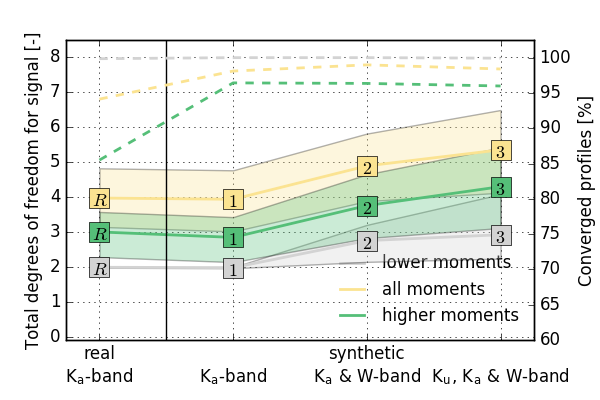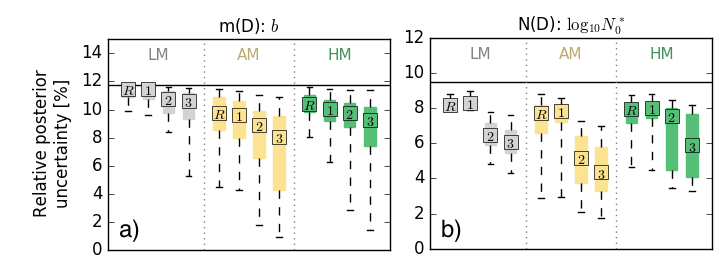Potential of higher-order radar moments and slopes for observing arctic ice clouds
Submitter:
Maahn, Maximilian — Leipzig University
Loehnert, Ulrich — University of Cologne
Area of research:
Cloud Distributions/Characterizations
Journal Reference:
Science
Classical radar observations of clouds are partially ambiguous for deriving micro-physical ice cloud characteristics such as water content and particle size. Here, we investigate whether additional information contained in the higher moments (Spectrum Width, Skewness, Kurtosis) and the slopes (left and right) of the radar Doppler spectrum (that can be easily derived from modern zenith-pointing Doppler radars) can improve ice cloud retrievals.
Impact
We found that higher moments and the slopes contain valuable additional information and their use can reduce the uncertainties of ice cloud retrievals significantly, in particular when using multiple frequencies.
Summary
We developed a Bayesian ice cloud retrieval using Optimal Estimation. We used in situ aircraft data obtained during the Indirect and Semi-Direct Aerosol Campaign (ISDAC) obtained around Utqiagvik (formerly known as Barrow), AK as an a priori data set. Using mainly synthetic but also real cloud radar observations, we compared retrievals exploiting three different sets of observations (lower moments LM, higher moments HM [includes slopes], and all moments AM) using one, two, or three radar frequencies. The retrieval state vector consists of the microphysical (particle-size distribution, mass-size relation, and cross section-area relation) and kinematic (vertical wind and turbulence) quantities required to forward-model the moments and slopes of the radar Doppler spectrum. To the authors’ knowledge, this is the first study characterizing simultaneously microphysical quantities and kinematic properties of ice clouds based on radar observations. We found that particularly the uncertainty of quantities describing the mass-size and the area-size relations of ice particles as well as the turbulence benefit from the use of higher moments and the slopes. For a single radar frequency, more information can be retrieved when including higher-order moments and slopes than when using only reflectivity and mean Doppler velocity but two radar frequencies. `



